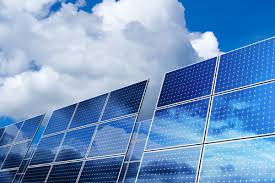

Click here for the 2017 Price List.
The first question many friends keep asking me is, how do Solar-Panels on the roof of Buildings really work? To answer here are some fundamentals of how to win Solar energy:
-
A normal Photovoltaic module is a panel which is attached to a roof or built on a field especially for Industrial purposes. These panels consist of many solar cells which are made up of one or two layers of semiconducting material. This material is usually silicone as it effectively absorbs the solar energy from the sun. -
When the sunlight comes into contact with this semiconducting layer an electrical field is created, transforming the sun’s rays into electrical energy.
-
The system includes an inverter which is used to convert the directed current (DC) into alternating current (AC). This is done so that we can run electrical appliances which run predominantly on AC.
-
With the sun's energy supplying a constant source of renewable energy, electrical appliances which are running will purely use the solar energy during the day. Any excess energy that is generated is transferred onto the national grid.
-
At times when the sun is not able to power the system such as at night , appliances can still be powered from mains electricity or Diesel engines. This does mean that savings you will make as a result of your solar installation will only be made during the day.
-
A solar power system may be completely disconnected from the main power grid. This is known as an off-grid, standalone or island solution. A system such as this requires batteries so energy can be stored during the day and used at night.
-
A meter will record all excess electricity which is fed onto the National-grid while also recording additional electricity which the system pulls off the grid. This means that you are paid for any energy which you feed back onto the grid and this is offset by the energy which you draw off the grid. Usually you will sell much higher than what you pay for.
-
Solar performance is measured in kWp (kilowatt peak) which refers to the amount of energy the solar cells generate during peak hours of full sunlight. Different systems will produce different results according to their ability to effectively balance energy and the efficiency of the solar cells used.
-
The efficiency of a solar module is measured on the percentage of solar energy which is converted into electricity. 20% is the highest approximate value which a solar cell may achieve.
-
Roof pitch, orientation, the plants power rating and shadow affects the output of a Photovoltaic (PV) system.
-
Generating solar energy is not purely through sunlight but through solar radiation, too. This means that a solar power system will still generate electricity when it is cloudy, but the amount of electricity produced will be reduced.
-
Generally, there is more than enough sunlight in most African countries to allow for effective operation of PV systems.
-
Thinking of installing a solar system in Ghana? Get a FREE quote from us now!
